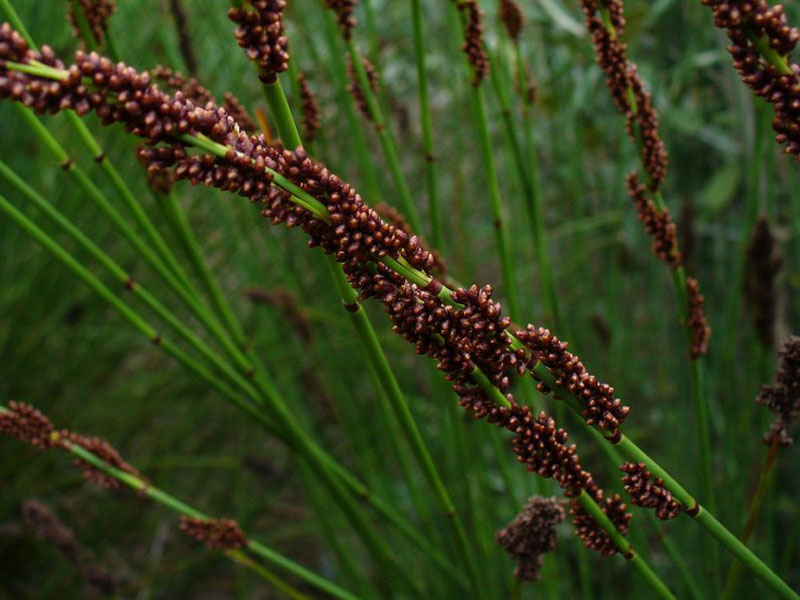Elegia tectorum
 Image: Andrew Massyn
Image: Andrew Massyn
Description
Elegia tectorum has an upright, symmetrical, tufted reed-like appearance with thin, dark green stems topped with dark brown flowers in slender compact spikes in autumn. It is a garden plant and can be used for thatching, growing particularly well alongside ponds in moist soilThe main requirements for growing restios successfully are full sun, a well-drained soil and plenty of air movement. The plants adapt to a large variety of soil types. The best time for planting restios is at the beginning of the rainy season, as the plants need regular watering during the first six weeks to two months after planting. After this initial period the plants can survive with very little additional watering
Propagation instructions - seeds
Restios are best grown from seed and since the seed in many species is very fine, it needs to be handled carefully. Researchers in the National Botanical Institute, now the South African National Biodiversity Institute, have discovered that treatment with smoke greatly increases the germination rate of this and many other species of Restionaceae.
They may be fed with standard organic fertilizers such as Seagro or Kelpak, or by sprinkling the surrounding soil with a small amount of ammonium sulphate during the growing season. Restios will respond to regular watering by showing more robust growth, but they are essentially plants which are adapted to a long dry season.
Sources and references
Scientific name
Elegia tectorum
Common name(s)
Cape thatching reed
